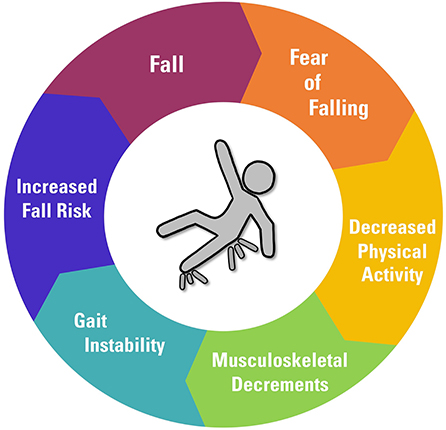The Main Principles Of Dementia Fall Risk
Table of ContentsThe 5-Second Trick For Dementia Fall RiskThe Greatest Guide To Dementia Fall RiskThe Buzz on Dementia Fall RiskWhat Does Dementia Fall Risk Do?Our Dementia Fall Risk Ideas
You may be worried since you've had a loss prior to or since you have actually discovered you're beginning to feel unstable on your feet. You may have seen modifications to your health, or simply seem like you're reducing a little. Whatever the reason, it isn't unusual to come to be careful and shed confidence, and this can stop you doing things you utilized to do and make you really feel much more separated.If you've had an autumn or you have actually begun to feel unstable, tell your physician also if you feel great or else. Your physician can check your equilibrium and the means you walk to see if enhancements can be made. They may be able to refer you for a drops risk evaluation or to the drops prevention service.
This details can be obtained through interviews with the individual, their caretakers, and a review of their medical documents. Begin by asking the specific about their background of drops, consisting of the regularity and situations of any kind of current falls. Dementia Fall Risk. Inquire about any type of flexibility problems they may experience, such as unsteady or trouble strolling
Conduct a comprehensive review of the individual's medications, paying certain interest to those known to boost the threat of drops, such as sedatives or drugs that reduced blood stress. Figure out if they are taking several medications or if there have actually been current adjustments in their medication regimen. Assess the individual's home atmosphere for possible risks that might enhance the threat of falls, such as poor lights, loosened rugs, or absence of grab bars in the bathroom.
Everything about Dementia Fall Risk
Guide the person through the loss risk analysis type, describing each question and recording their feedbacks accurately. Make certain that the specific comprehends the objective of the evaluation and feels comfortable supplying straightforward responses. Compute the complete threat rating based upon the feedbacks given in the analysis kind. Establish the individual's risk category (low, tool, or high) based on the complete rating and the existence of automatic high-risk standing aspects.
Consistently keep track of the person's progression and reassess their threat of falls as needed. Give continuous education and learning and assistance to advertise safety and security and decrease the threat of falls in their everyday living activities.
Many research studies have shown that physical therapy can assist to decrease the risk of falling in grownups ages 65 and older. In a brand-new research (that took a look at drops risk in females ages 80 and older), scientists determined the economic impact of choosing physical treatment to avoid falls, and they located that doing so conserves $2,144, including all the hidden prices of your time, discomfort, missed out on life occasions, and the dollars paid for solutions.
Things about Dementia Fall Risk
Examining your heart rate click to investigate and high blood pressure dimensions at rest and while you turn (from sitting or existing to standing). A simple examination of your thinking (cognitive) capabilities. Evaluating your equilibrium, toughness, and walking capacity. An easy vision examination. Evaluating your feet and footwear. A home safety evaluation. Based on the assessment results, your physiotherapist will create a plan that is tailored to your details requirements.
Older grownups that have trouble walking and talking at the exact same time are at a higher danger of dropping. Dementia Fall Risk. To help enhance your safety during everyday tasks, your physiotherapist may design a training program that will test you to keep standing and strolling while you do another task. Examples include strolling or standing while counting backward, having a conversation, or carrying a bag of groceries
Your physiotherapist additionally can recognize which tasks you should prevent to remain secure. Community-based drops avoidance programs aid individuals to: Lower their anxiety of falling. Set goals for enhancing their exercise. Make their homes much safer. Work out a lot more to boost their toughness and equilibrium. These programs often are led by volunteer coaches.
The Ultimate Guide To Dementia Fall Risk

Measles, or rubeola, is a very transmittable, intense viral transmittable illness brought on by the measles infection. Some individuals assume of measles as simply a breakout More about the author and high temperature that clears in a few days; however, measles can cause major health complications, specifically in kids younger than 5-years-old. The very best defense versus measles is the measles, mumps, and rubella (MMR) injection.
Autumns are a common cause of injury amongst older adults. According to the CDC, in one year alone, fall-related injuries added to over $50 billion in clinical expenses (Dementia Fall Risk). In hospital settings, older grownups are at particularly high threat of falls because their lowered wheelchair from being confined to a room or bed.
Excitement About Dementia Fall Risk

She has a clinical history of seizure disorder and high blood pressure. She is receiving an IV infusion and taking Gabapentin and Lasix. She has no background of drops, her gait is stable, and she invalidates with no problems. The previous registered nurse states that she calls for help to the washroom when she needs to go.
Instances of usual fall interventions/measures include: Making sure a person's important products are available. Placing the patient's bed rails up with the alarm on. Assisting read here a client while they're rising from bed. Past recognizing just how to make use of the Johns Hopkins Fall Risk Assessment Tool, it's essential that facilities integrate its use into a much more comprehensive loss avoidance strategy.